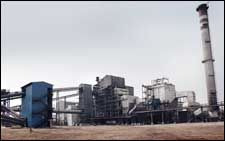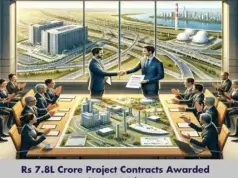 India is currently playing catch up with the West in the Ready Mix Concrete sector. However, with infrastructure development continuing to receive top billing, it is a matter of time before the RMC industry comes into its own, says R. Sanjay, Assistant Executive Director – Institutional Sales, Dalmia Bharat Cement Ltd.
India is currently playing catch up with the West in the Ready Mix Concrete sector. However, with infrastructure development continuing to receive top billing, it is a matter of time before the RMC industry comes into its own, says R. Sanjay, Assistant Executive Director – Institutional Sales, Dalmia Bharat Cement Ltd.
Infrastructure growth is one of the foremost topics in the election manifestos of most parties vying for seats in the upcoming general elections. The current government has already targeted about $1 trillion towards infrastructure spends in the 12th Five-Year Plan (2012-2017). With such a pronounced focus on developing infrastructure and promised large spends in mass transit systems (metros), building smart cities, upgrading ports, airports and other terminuses, the demand for Ready-Mix Cement (RMC) is likely to see a surge in the coming years.
While the RMC industry in India is still at a very nascent stage, most developed countries have already shifted to RMC and RMC companies account for the majority share (up to 60 per cent) of cement manufactured in the West. This can be attributed to the distinct advantages RMC enjoys over Site Mix Concrete (SMC) as a result of the precise consistency achieved due to the technological advancements in the production, transportation and dispensing of the concrete.
In India, currently, cement continues to be consumed in bags and a major source of revenue for almost all cement companies in the country continues to be bagged cement retail consumers serviced via dealers. However, now the acceptability of RMC seems to be gaining ground in urban areas, particularly in the metros and large cities. Many infrastructure projects have shown preference for RMC and specifications in tenders by municipal corporations and similar government bodies have also started specifying RMCs as part of their requirements.
 Current challenges
Current challenges
Lack of credit in the market is one of the key challenges faced by RMC players in the country. Largely due to the liquidity crunch in the market and drying up of cash flow, many small RMC players are already shutting shop. Companies such as Neptune Ready Mix Concrete (now a part of RDC group) that operated with most of its customers on advance payments now have a large majority of their customers operating on credit. Partly, this can also be attributed to the growing number of RMC players in the country competing for the same set of projects. However, with an increasing number of Infrastructure Development Funds (IDFs) entering the country and infrastructure loans shifting on to this line of credit, the funding for large infrastructure projects should gradually see cash flows coming back into the system.
In the current market scenario, a far more serious concern is the lack of good quality aggregates. Aggregates are the lifeline of continuing RMC supplies. Over the last one year, many sites have faced acute aggregate shortages at least once. This is primarily the case in metros like Chennai and Bengaluru. A clearer framework on the government policy towards sand mining and quarry operations will clear up the way forward. While sand mining does pose environmental hazards, little has been done by the industry and the government, in promoting alternatives like M-sand.
Demand and future growth
Main demand drivers going forward are likely to be in the form of government initiatives in the direction of development of smart cities, better urban transportation modes like metros, monorails etc., and enhancement or revamping of existing infrastructure facilities like airports, hospitals, bridges, roads and stations. The industry is counting on the housing segment to boost demand particularly in the rural and semi-urban markets. Infrastructure cement consumption under the heads of irrigation, railways, water bodies (supply, sanitation and drainages) is also likely to increase. State expenditures in the form or civil works in transportation, urban development and utilities is also likely to remain strong and will account for a sizeable portion of the RMC order books.
The growth of RMC units to many upcountry locations and second tier cities is an indicator of the industry’s shift. In addition, as a result of guaranteed availability in such markets it is likely that the pricing pressures will be much lower. In fact, as wages rise and labour shortages continue to press infrastructure growth, more rural and semi-urban markets will shift towards the RMC players to meet their demand. This is a very likely scenario that should lead to the RMC consumption of cement in India moving up from the current sub 5 per cent levels to double-digit levels.











